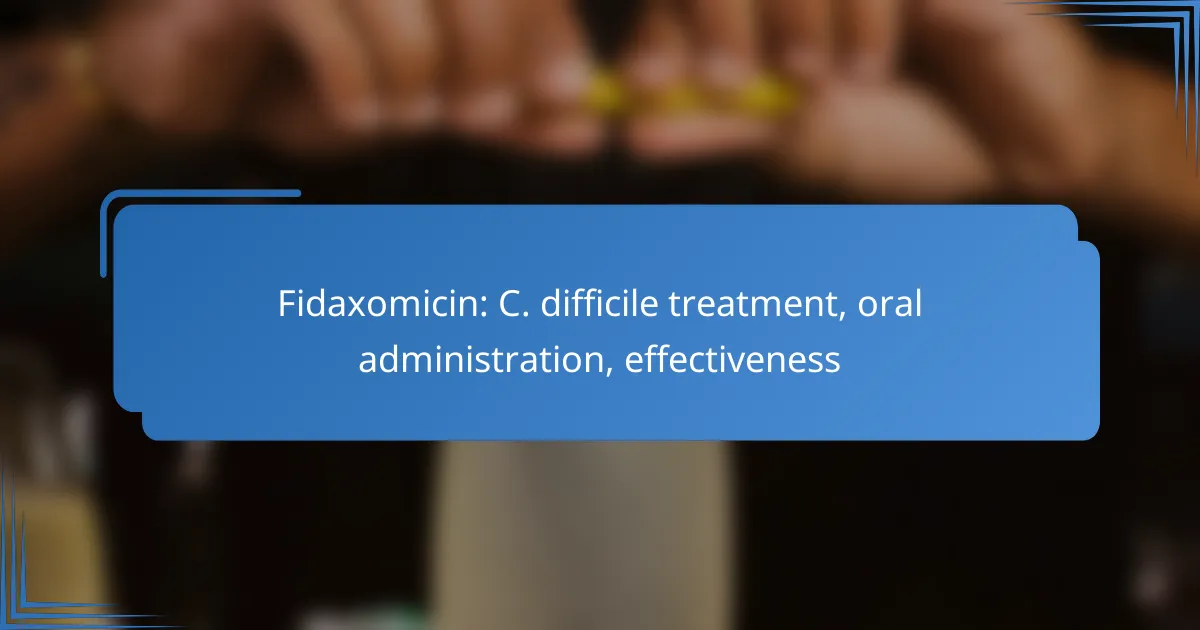Fidaxomicin is a targeted antibiotic specifically designed to treat Clostridioides difficile (C. difficile) infections by inhibiting bacterial RNA polymerase, crucial for bacterial growth. Administered orally, it effectively reduces the C. difficile population in the gut while minimizing systemic exposure, making it a preferred treatment option for many patients in Canada.

What are the treatment options for C. difficile in Canada?
In Canada, treatment options for Clostridioides difficile (C. difficile) infections primarily include fidaxomicin, vancomycin, and metronidazole. Each option has its own effectiveness, administration routes, and considerations for use based on the severity of the infection.
Fidaxomicin effectiveness
Fidaxomicin is an oral antibiotic specifically designed to treat C. difficile infections. It has shown high effectiveness in reducing recurrence rates compared to other treatments, making it a preferred choice for many patients, especially those with recurrent infections.
Clinical studies indicate that fidaxomicin can achieve cure rates in the range of 80-90%, depending on individual patient factors. Its targeted action minimizes disruption to the gut microbiome, which is crucial for recovery.
Vancomycin comparison
Vancomycin is another oral treatment option for C. difficile infections, often used when fidaxomicin is unavailable or not suitable. While effective, vancomycin has a higher recurrence rate compared to fidaxomicin, which can be a significant drawback for patients.
In clinical settings, vancomycin typically achieves cure rates around 70-80%. However, it may be less effective in preventing future infections, which is a critical consideration for treatment planning.
Metronidazole limitations
Metronidazole was once a first-line treatment for C. difficile infections but has fallen out of favor due to its limitations. While it can be effective for mild cases, it is not recommended for severe infections or recurrent cases.
Recent guidelines suggest that metronidazole has lower cure rates, often below 60%, and a higher likelihood of recurrence. Its side effects and potential interactions with other medications further limit its use in treating C. difficile infections.
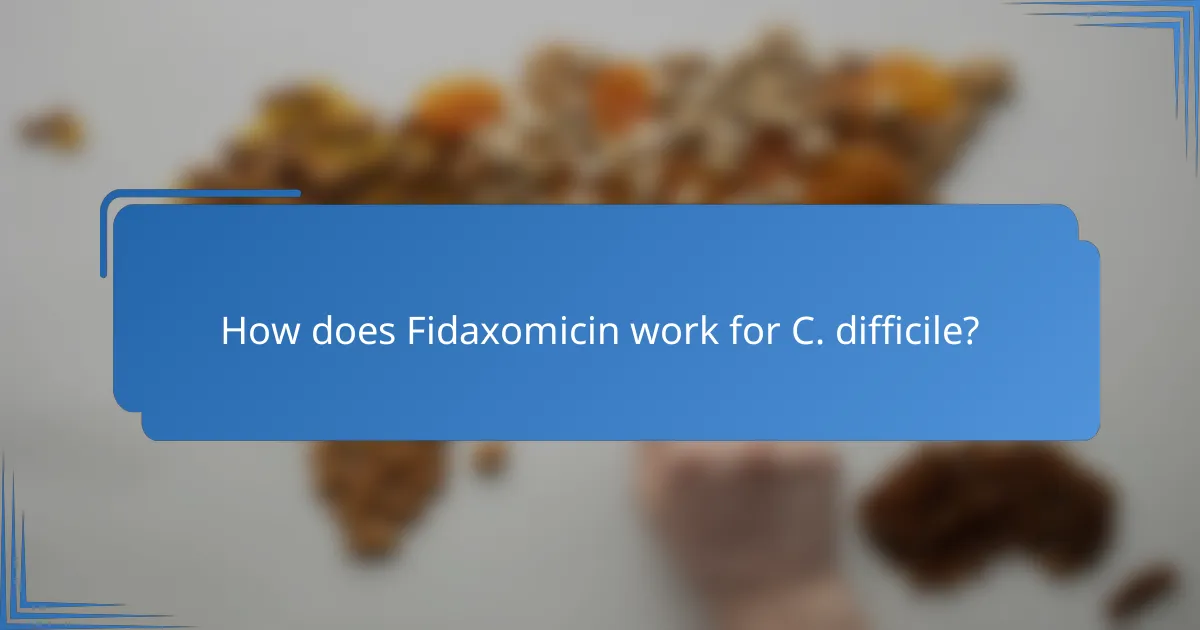
How does Fidaxomicin work for C. difficile?
Fidaxomicin is an antibiotic specifically designed to treat infections caused by Clostridioides difficile (C. difficile). It works by inhibiting bacterial RNA polymerase, which is essential for bacterial growth and replication, thereby effectively reducing the C. difficile population in the gut.
Mechanism of action
Fidaxomicin targets the bacterial RNA polymerase enzyme, preventing the transcription of bacterial DNA into RNA. This action disrupts the synthesis of proteins necessary for bacterial survival. Unlike many other antibiotics, fidaxomicin is minimally absorbed into the bloodstream, allowing it to act primarily within the gastrointestinal tract where C. difficile resides.
This localized action helps to maintain a lower risk of systemic side effects while effectively combating the infection. The selective inhibition of C. difficile over other gut bacteria contributes to its effectiveness in treating the infection.
Impact on gut microbiome
Fidaxomicin has a relatively sparing effect on the gut microbiome compared to traditional broad-spectrum antibiotics. By selectively targeting C. difficile, it helps preserve beneficial gut bacteria, which can be crucial for recovery and maintaining gut health.
Maintaining a balanced microbiome is important as it can reduce the risk of recurrent C. difficile infections. Patients treated with fidaxomicin often experience fewer disruptions to their gut flora, which can lead to better overall outcomes in managing their condition.
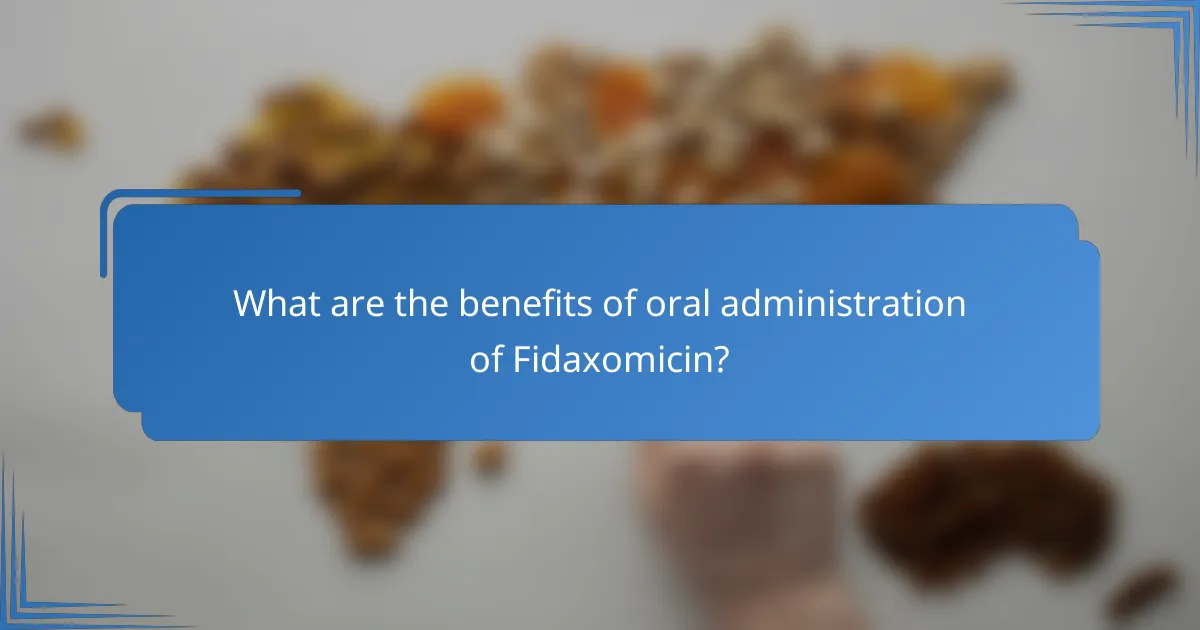
What are the benefits of oral administration of Fidaxomicin?
The oral administration of Fidaxomicin offers several advantages for treating Clostridium difficile infections. Its targeted action in the gastrointestinal tract enhances effectiveness while minimizing systemic exposure, making it a preferred choice for many patients.
Convenience of oral dosing
Oral dosing of Fidaxomicin is straightforward, allowing patients to take the medication at home without the need for injections or infusions. This convenience can lead to easier integration into daily routines, as patients can simply swallow the tablets with water.
Additionally, oral administration eliminates the need for healthcare visits for drug delivery, which can be particularly beneficial for patients with mobility issues or those living in remote areas. This accessibility can improve overall treatment adherence.
Patient compliance
Patient compliance is often higher with oral medications like Fidaxomicin due to the ease of administration. When patients find a treatment regimen manageable, they are more likely to follow it consistently, which is crucial for effective infection resolution.
Moreover, the simplicity of taking a pill compared to more complex treatment options can reduce anxiety and improve the overall patient experience. This can lead to better health outcomes, as consistent use of the medication is essential for combating C. difficile infections effectively.
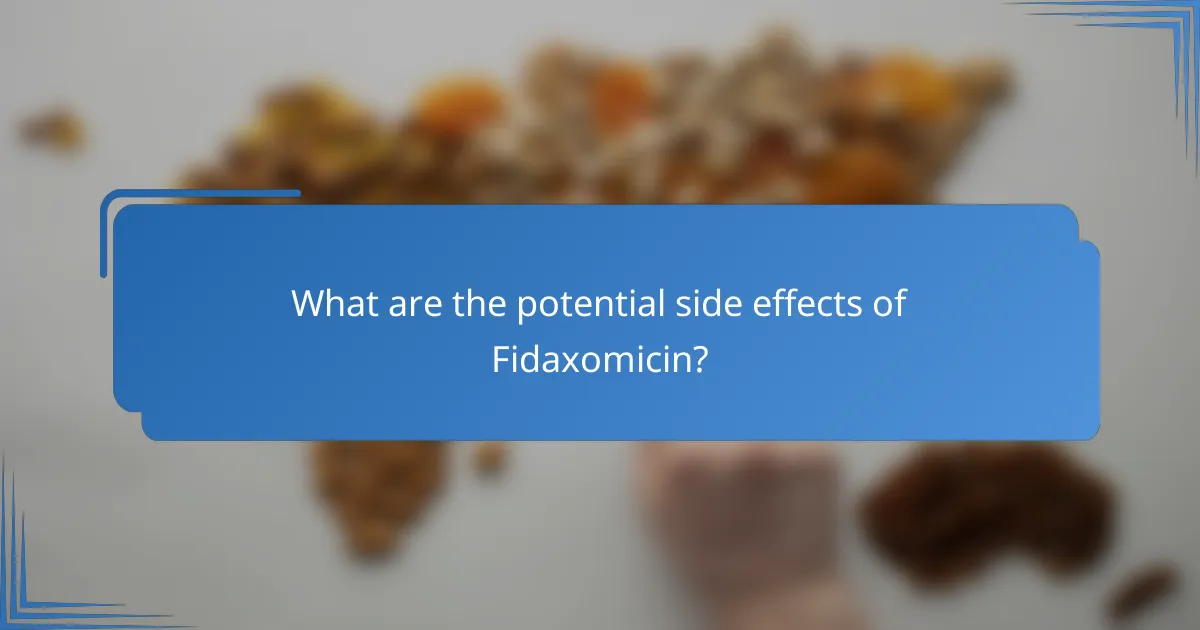
What are the potential side effects of Fidaxomicin?
Fidaxomicin can cause a range of side effects, some of which are common while others may be more serious. Understanding these potential reactions is crucial for patients undergoing treatment for C. difficile infections.
Common side effects
Common side effects of Fidaxomicin include nausea, vomiting, and abdominal pain. These symptoms are typically mild and may resolve on their own as the body adjusts to the medication.
Some patients may also experience diarrhea, which can be counterintuitive given that Fidaxomicin is used to treat C. difficile-associated diarrhea. Monitoring these symptoms is important to ensure they do not worsen.
Serious adverse reactions
Serious adverse reactions to Fidaxomicin, while rare, can occur and may include severe allergic reactions, such as anaphylaxis. Symptoms of an allergic reaction may include difficulty breathing, swelling of the face or throat, and hives.
Additionally, patients should be aware of the potential for Clostridium difficile infection recurrence, which can happen despite treatment. If symptoms return or worsen, it is essential to consult a healthcare provider promptly.
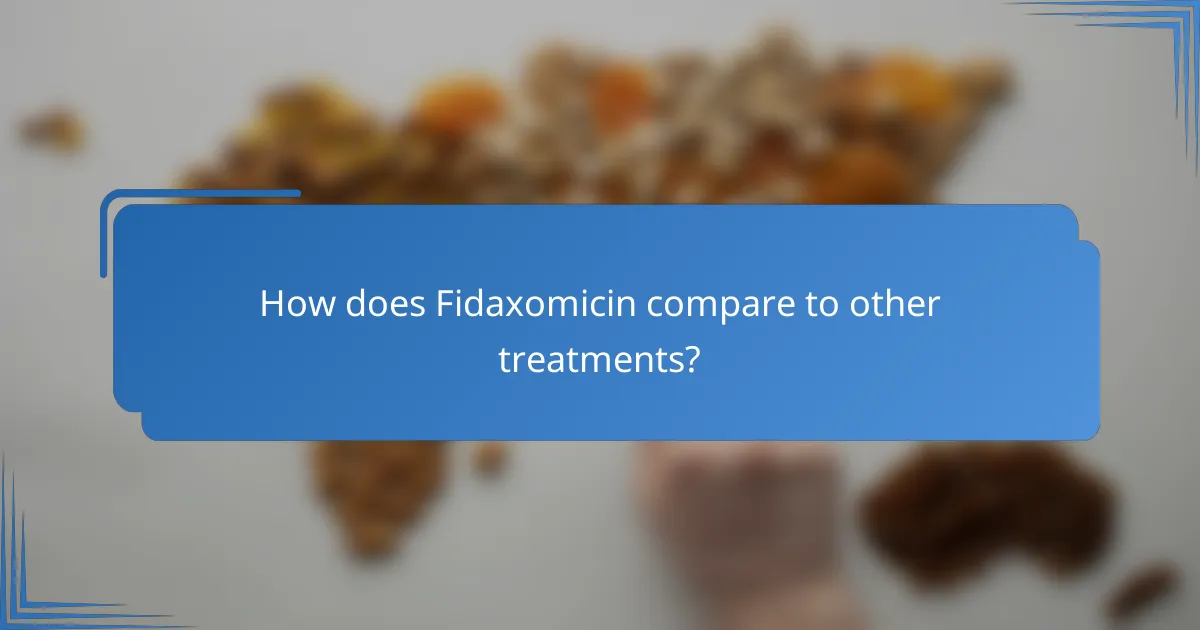
How does Fidaxomicin compare to other treatments?
Fidaxomicin is a targeted antibiotic specifically used for treating Clostridioides difficile infections (CDI) and is often compared to other treatments like vancomycin. Its unique mechanism and lower recurrence rates make it a valuable option, particularly for patients with recurrent CDI.
Cost comparison with alternatives
Fidaxomicin tends to be more expensive than vancomycin, often costing several hundred dollars for a typical course of treatment. In the United States, fidaxomicin can range from $2,000 to $3,000 for a standard treatment regimen, while vancomycin is generally less costly, typically under $1,000. However, when considering the potential for reduced recurrence rates and subsequent treatments, fidaxomicin may offer cost-effectiveness in the long run.
Efficacy rates vs. vancomycin
Fidaxomicin has shown comparable efficacy to vancomycin in treating initial CDI episodes, with cure rates often reported in the range of 85-90%. However, fidaxomicin has demonstrated a significantly lower recurrence rate, around 10-20%, compared to vancomycin, which can have recurrence rates exceeding 25%. This makes fidaxomicin a strong candidate for patients with a history of recurrent infections, as it may lead to fewer overall treatment cycles.

What are the dosing guidelines for Fidaxomicin?
The dosing guidelines for Fidaxomicin typically involve a standard oral dosage of 200 mg taken twice daily for the treatment of Clostridioides difficile infections. These guidelines ensure effective management of the infection while minimizing potential side effects.
Recommended dosage
The recommended dosage of Fidaxomicin is 200 mg administered orally twice a day. This dosage is consistent across most adult patients diagnosed with C. difficile infections. It’s crucial to follow the prescribed dosage to maximize treatment efficacy and reduce the risk of recurrence.
For patients with specific conditions, such as renal impairment, dosage adjustments may not be necessary. However, always consult with a healthcare provider for personalized recommendations based on individual health status.
Duration of treatment
The typical duration of treatment with Fidaxomicin is 10 days. Completing the full course is essential to ensure the infection is fully eradicated and to prevent relapse. Stopping treatment early may lead to a higher risk of recurrence.
In some cases, healthcare providers may recommend extending treatment based on the patient’s response or if there are complications. Regular follow-ups are important to monitor progress and adjust treatment as needed.
